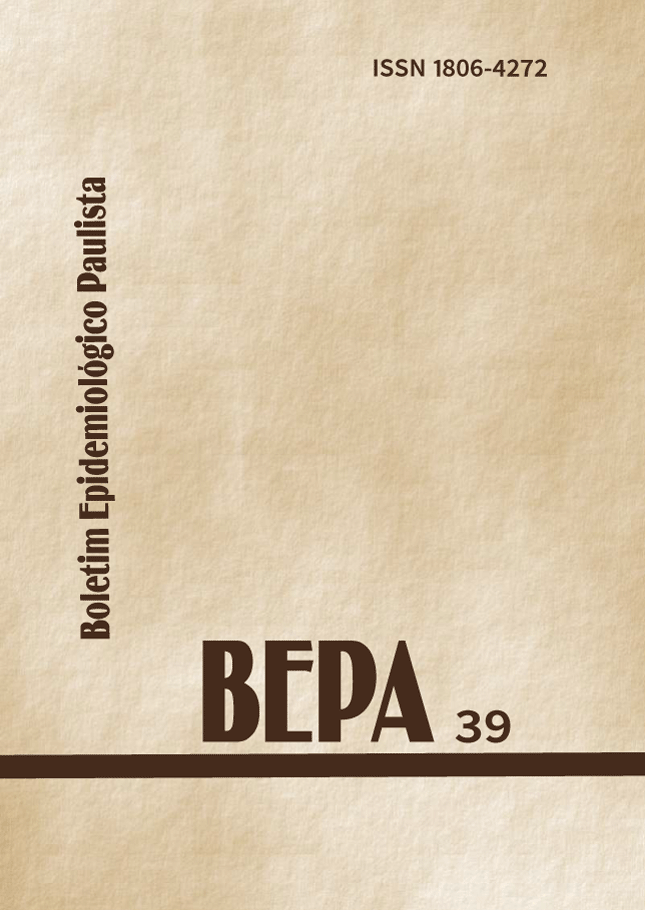Abstract
Epidemiological surveillance (VE) of nosocomial infections (IH) intends to measure the occurrence of this event and to assess its endemical levels. With the objective of producing data by means of which immediate actions and program planning could be established and evaluated, the Division of Nosocomial Infection of the Center for Epidemiological Surveillance (CVE) presents the data analysis from the Epidemiological Surveillance System of the IH of the State of São Paulo, established in 2004, which was set up in critical and surgical unities. Selected specific indicators evaluated the major infectious syndromes in populations at higher risk. Adhesion to the notification system, in 60% of the cadastred hospitals (534/896) was higher, in comparison to the levels of 2004. Reporting was constant throughout the year, with an average of 398 reporting hospitals per month. Data reporting occurred according to the characteristic of the attention offered by each unit: 456 (85,4%) of the hospitals reported the chart 1, with data from clean surgeries; 275 (51,5%) reported chart 2, with data from Adults, Pediatrics and Coronary Intensive Care Units (UTI) and 124 (23,2%) reported data from Newborn Intensive Care Units (Chart 3). For each of the indicators, percental distribution of rates was performed. We concluded there was a improvement of the adhesion to the Nosocomial Infection Surveillance System, though there us the need to improve the quality of the information.
References
Graves N. Economics and preventing hospital-acquired infection. Emerg Infect Dis [periódico on-line] 2004; 10 (4). Disponível em www.cdc.gov/eid [2007 mar 8].
Prade SS, Oliveira ST, Rodrigues R et al. Estudo brasileiro da magnitude das infecções hospitalares em hospitais terciários. Rev Controle Inf Hosp 1995; 2 : 11-25.
WHO. World Health Organization Departament of Communicable Disease, Surveillance and Response. Prevention of Hospital Acquired Infections. A pratical guide. 2nd edition. Disponível em www.who.int [2007 mar 8].
Brasil. Cadastro Nacional dos Estabelecimentos de Saúde (CNES). Disponível em www.cnes.datasus.gov. br [2005 abril].
Secretaria de Estado da Saúde de São Paulo. Coordenadoria de Controle de Doenças. Centro de Vigilância Epidemiológica “Prof. Alexandre Vranjac”. Divisão de Infecção Hospitalar. Vigilância Epidemiológica das Infecções Hospitalares no Estado de São Paulo – Dados 2004. BEPA 2006; Supl. 3 (3):1-121. Disponível em: ftp://ftp.cve.saude.sp.gov.br/doc_tec/ih/ih_dados04.pdf.
Mangram AJ, Horan TC, Pearson ML, Silver LC, Jarvis WR. Guideline for Prevention of Surgical Site Infection, 1999. Infect Control Hosp Epidemiol. 1999;20(4):247-278.
WHO. World Health Organization. Maladies émergentes et autres maladies transmissibles; résistence aux antimicrobiens. Disponível em URL:http://www.who.int [2007 mar 8]

This work is licensed under a Creative Commons Attribution 4.0 International License.
Copyright (c) 2007 Denise Brandão de Assis, Geraldine Madalosso, Sílvia Alice Ferreira, Ana Lívia Geremias
